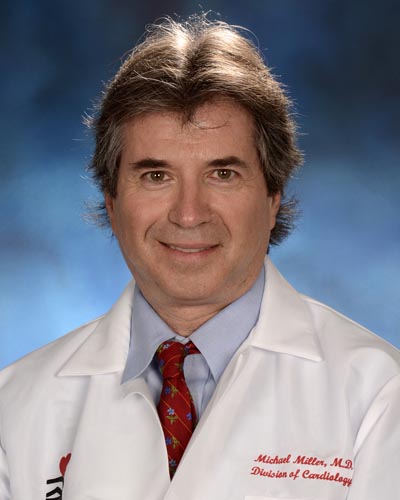May 31, 2022 | Deborah Kotz
More than 70 percent of Physicians Reported in Survey That They Would Use Antibiotics to Treat Asymptomatic Bacteria in Urine Test, Going Against Recommended Guidelines
An estimated 70 percent of primary care physicians reported in a survey that they would still prescribe antibiotics to treat asymptomatic infections based solely on a positive urine specimen. This is despite long-held medical guidelines recommending against this practice, according to a new study published in JAMA Network Open, which was led by University of Maryland School of Medicine (UMSOM) researchers.

In the study, the UMSOM researchers surveyed 723 primary care clinicians from Texas, the Mid-Atlantic, and the Pacific Northwest regarding their approach to a hypothetical patient with asymptomatic bacteriuria; this is a condition where bacteria are detected in the urine of a patient without any UTI symptoms. They found 71 percent of clinicians, 392 out of the 551 who completed the survey, would opt to treat such a patient with antibiotics even though such treatment goes against the recommended guidelines.
“Our study suggests that primary care clinicians do not follow widely accepted recommendations against prescribing antibiotics for asymptomatic bacteriuria,” said lead author Jonathan Baghdadi, MD, PhD, Assistant Professor of Epidemiology & Public Health at UMSOM. “Some primary care clinicians may be unaware of these recommendations, but a culture of inappropriate prescribing is also likely a contributing factor.”

“We found other factors also played a role in prescribing like whether a physician had a stronger preference in favor of over-treating a condition and fear of missing a diagnosis; that person was more likely to favor prescribing antibiotics compared to a physician who felt more comfortable with uncertainty in practicing medicine,” said study leader Daniel Morgan, MD, MS, Professor of Epidemiology & Public Health at UMSOM.
One strategy to change practice could be an education program targeting physicians who place a high priority on treating just to make sure they do not miss a possible infection, the researchers said in the conclusion section of the article. For example, reframing “unnecessary treatment” with antibiotics as “potentially harmful” treatment with antibiotics could help curb the tendency towards overprescribing.

The research was funded by the New Innovator Award from the National Institutes of Health and the University of Maryland, Baltimore Institute for Clinical & Translational Research/Clinical and Translational Science Award.

About the University of Maryland School of Medicine
Now in its third century, the University of Maryland School of Medicine was chartered in 1807 as the first public medical school in the United States. It continues today as one of the fastest growing, top-tier biomedical research enterprises in the world -- with 46 academic departments, centers, institutes, and programs, and a faculty of more than 3,000 physicians, scientists, and allied health professionals, including members of the National Academy of Medicine and the National Academy of Sciences, and a distinguished two-time winner of the Albert E. Lasker Award in Medical Research. With an operating budget of more than $1.3 billion, the School of Medicine works closely in partnership with the University of Maryland Medical Center and Medical System to provide research-intensive, academic and clinically based care for nearly 2 million patients each year. The School of Medicine has nearly $600 million in extramural funding, with most of its academic departments highly ranked among all medical schools in the nation in research funding. As one of the seven professional schools that make up the University of Maryland, Baltimore campus, the School of Medicine has a total population of nearly 9,000 faculty and staff, including 2,500 students, trainees, residents, and fellows. The combined School of Medicine and Medical System (“University of Maryland Medicine”) has an annual budget of over $6 billion and an economic impact of nearly $20 billion on the state and local community. The School of Medicine, which ranks as the 8th highest among public medical schools in research productivity (according to the Association of American Medical Colleges profile) is an innovator in translational medicine, with 606 active patents and 52 start-up companies. In the latest U.S. News & World Report ranking of the Best Medical Schools, published in 2021, the UM School of Medicine is ranked #9 among the 92 public medical schools in the U.S., and in the top 15 percent (#27) of all 192 public and private U.S. medical schools. The School of Medicine works locally, nationally, and globally, with research and treatment facilities in 36 countries around the world. Visit medschool.umaryland.edu
Contact
Deborah Kotz
Senior Director of Media Relations
Office of Public Affairs & Communications
University of Maryland School of Medicine
Email: DKotz@som.umaryland.edu
o: 410-706-4255
c: 410-804-0054
t: @debkotz2
Related stories

Friday, April 05, 2024
Researchers Identify New Genetic Risk Factors for Persistent HPV Infections
Human papillomavirus (HPV) is the second most common cancer-causing virus, accounting for 690,000 cervical and other cancers each year worldwide. While the immune system usually clears HPV infections, those that persist can lead to cancer, and a new finding suggests that certain women may have a genetic susceptibility for persistent or frequent HPV infections. These genetic variants, identified in a study led by University of Maryland School of Medicine researchers, could raise a woman’s risk of getting cervical cancer from a high-risk HPV infection.

Thursday, October 12, 2023
UM School of Medicine Researchers Provide First Statewide Prevalence Data on Two New Emerging Pathogens in Healthcare Settings
University of Maryland School of Medicine (UMSOM) researchers conducted a statewide survey of all patients on breathing machines in hospitals and long-term care facilities and found that a significant percentage of them harbored two pathogens known to be life-threatening in those with compromised immune systems. One pathogen, Acinetobacter baumannii, was identified in nearly 31 percent of all patients on ventilators to assist with their breathing; Candida auris was identified in nearly 7 percent of patients on ventilators, according to the study which was published today in the Journal of the American Medical Association.

Tuesday, November 01, 2022
Youngest Girls Who Get Pregnant Have Highest Risk of Poor Outcomes, Study Finds
Pregnant teens in the U.S. have long been known to face increased health risks and pregnancy complications, but a new study for the first time finds that girls ages 13 or younger who get pregnant face even greater risks. These very young girls are significantly more likely to experience preterm birth, cesarean delivery, and admission to the intensive care unit (ICU) compared to older pregnant teens. Researchers from the University of Maryland School of Medicine (UMSOM) and the University of Pennsylvania Perelman School of Medicine led the study, which was published today in the Journal of the American Medical Association (JAMA).

Tuesday, May 11, 2021
New Study Suggests Pregnant Women Hospitalized for Covid-19 Infection Do Not Face Increased Risk of Death
Pregnant women who develop severe COVID-19 infections that require hospitalization for pneumonia and other complications may not be more likely to die from these infections than non-pregnant women. In fact, they may have significantly lower death rates than their non-pregnant counterparts. That is the finding of a new study published today in the Annals of Internal Medicine conducted by researchers at the University of Maryland School of Medicine (UMSOM).

Tuesday, January 23, 2018
Novel Gene Mutations Linked to High HDL Cholesterol and Apparent Protection from Heart Disease
Researchers at the University of Maryland School of Medicine (UMSOM) have uncovered genetic mutations that may explain why people with high levels of high-density lipoprotein (HDL) cholesterol, the “good cholesterol,” have a reduced risk of coronary heart disease.

